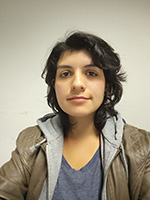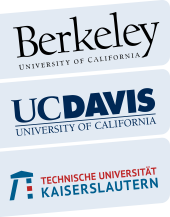

RESEARCH PROGRAM
Title: Applying Human Centered Design to Complex Augmented Reality Environments
Name: M.Sc. Carol Ximena Naranjo Valero
EMail: valero@cs.uni-kl.de
Phone: +49 (0)631–2053265
Project description:
Starting situation
With the outstanding technological advances of the last fifteen years for Augmented Reality environments, being the Hololens of Microsoft the most complete cutting edge solution to the moment, many are the expectations for its usage in different fields, but also multiple the open challenges and requirements to be solved.
In particular, in the manufacturing industry some of the most recent proposals look forward to support tasks like factory layout planning, onsite monitoring, or to assist any of the stages in the production pipeline, among others tasks. At the same time, in order to support such applications, improved spatial recognition algorithms and more effective interaction techniques in AR are in constant development, and so still require further exploration and validation.
Approach
We propose designing AR applications that take advantage of heterogeneous data gathered among multimodal devices in order to get a better understanding of the context and use it to generate a more natural user experience with more flexible interaction capabilities. By using heterogeneous data as input we intend to boost the performance and results of several algorithms present in the any standard AR application pipeline, resulting in a more harmonical perception of the virtual elements in the augmented scene.
At the same time, based on the multimodal approach we intend to design novel usercentered interaction techniques in dynamic scenarios by combining nontraditional types of feedback like, for example, the haptic technology, all in the context of selected use cases in the context of manufacturing systems.
Expected Results
We propose designing AR applications that take advantage of heterogeneous data gathered among ultimodal devices in order to get a better understanding of the context and use it to generate a more natural user experience with more flexible interaction capabilities. By using heterogeneous data as input we intend to boost the performance and results of several algorithms present in the any standard AR application pipeline, resulting in a more harmonical perception of the virtual elements in the augmented scene.
At the same time, based on the multimodal approach we intend to design novel usercentered interaction techniques in dynamic scenarios by combining nontraditional types of feedback like, for example, the haptic technology, all in the context of selected use cases in the context of manufacturing systems.

